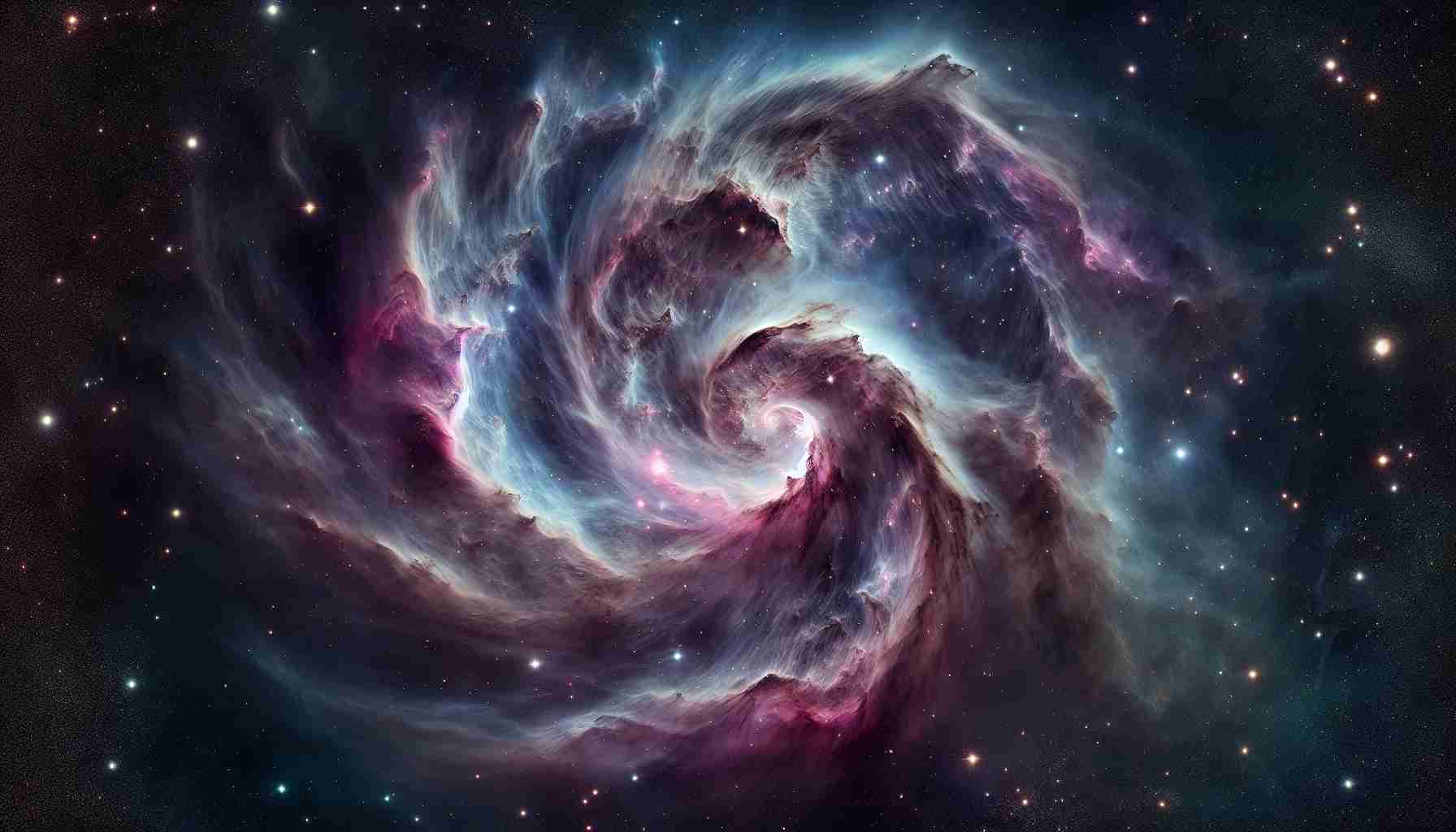In the distant reaches of the cosmos, a mesmerizing vortex nebula radiates its ethereal essence, dispersing cosmic particles at incredible velocities.
This celestial marvel, known as the Vortex Nebula, captivates astronomers with its peculiar form and enigmatic origins. Researchers have recently delved into the nebula’s intricacies, unveiling a spectacle akin to a galactic blossoming. Unlike anything observed before, the nebula’s swirling tendrils spiral outward, reminiscent of a celestial whirlwind.
Initially discovered in 2021, the Vortex Nebula’s genesis traces back to an ancient cataclysm in the astronomical records of 1185. Coded remnants of a supernova explosion, the nebula stands as a testament to the cycle of stellar life and death, echoing the mysteries witnessed by astronomers over centuries.
Nebulas, like the Vortex Nebula, serve as cosmic beacons, illuminating the vast expanse with their radiant glow and colossal presence. Within its core lies a fragment of the birthing star, radiating intense heat at unimaginable temperatures, far surpassing the intensity of our own Sun.
Astrophysicists, led by Dr. Olivia Reynolds, have meticulously probed the depths of the Vortex Nebula using state-of-the-art imaging technology. Through the Cosmic Spectrum Analyzer (CSA) in orbit around Neptune, researchers have uncovered the nebula’s energetic composition and dynamic flow, painting a vivid portrait of cosmic evolution.
As the mysteries of the Vortex Nebula continue to unfold, astronomers are left pondering the forces at play that shape this cosmic masterpiece. The shifting sands of space-time conceal secrets yet to be unveiled, beckoning humanity to explore the boundless wonders of the universe.
Additional Facts:
– The Vortex Nebula is also known by its scientific designation, NGC 7293.
– The nebula is located in the constellation Aquarius, approximately 2,300 light-years away from Earth.
– The Vortex Nebula belongs to the class of planetary nebulas, which are the remnants of dying stars.
Key Questions:
– What are the specific mechanisms responsible for the formation of the intricate swirling patterns observed in the Vortex Nebula?
– What is the significance of the ancient cataclysm that led to the creation of the nebula in 1185?
– How do stellar remnants within the Vortex Nebula contribute to our understanding of the life cycle of stars?
Challenges and Controversies:
– One key challenge associated with studying the Vortex Nebula is the difficulty in discerning the exact processes that govern its intricate structure due to limited observational data.
– Controversies may arise regarding the interpretation of the data collected on the nebula, particularly in relation to its origins and the implications for broader astronomical theories.
Advantages:
– The Vortex Nebula provides a unique opportunity for astronomers to study the intricate dynamics of a planetary nebula, shedding light on the processes involved in the late stages of stellar evolution.
– By unraveling the mysteries of the Vortex Nebula, scientists can gain valuable insights into the complex interplay of cosmic forces shaping our universe.
Disadvantages:
– Limited observational data and the vast distance of the Vortex Nebula pose challenges to conducting detailed and comprehensive studies of its structure and properties.
– The enigmatic nature of the Vortex Nebula may lead to uncertainties and debates within the scientific community regarding its formation and evolutionary history.



